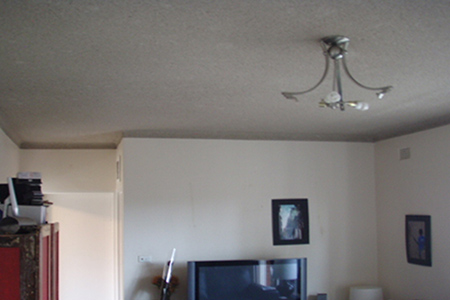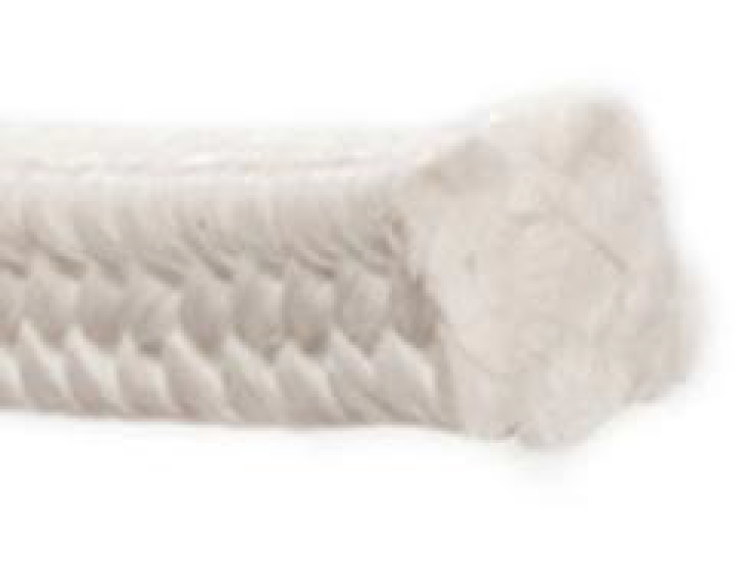
Sheeting, panels and pipes containing asbestos are found as building products and were extensively used in residential and commercial buildings particularly throughout the 1960’s and 1970’s and into the 1980’s. More generally they were used in wet areas and for external wall cladding and eaves lining. Building materials were less likely to contain asbestos later particularly by the 1990’s. The asbestos containing materials (ACMs) were often manufactured locally. Recently fibre cement building sheets imported from China has been found to contain asbestos. In Australia it has been illegal for ACMs be imported or to be used for building since the beginning of 2004.

Asbestos was used in the adhesive to glue down the carpet underlay which is often a black bitumous material. Vinyl tiles often contain chrysotile (white) asbestos. Be careful when lifting fibrous "paper" backed vinyl sheeting as this may contain friable asbestos. Asbestos was also carried in hessian bags from Wittenoon in Western Australia which was then subsequently used in some carpet underlay.

Asbestos can be located within the duct work of Air Conditioning re-heating units. This is more specifically located around heating elements. It can also be found in millboard lining which surrounds the air conditioning re-heating elements. Meter boxes may contain a dark insulation panel known as resin board or the commercial name, "zelemite". Occasionally meters have a white fibrous sheet of millboard which is friable.

Asbestos ceilings are common in houses constructed between
the 1950s and before the 1990s. Asbestos ceilings were used
because of their fireproofing and heat resistance
properties. In houses, asbestos ceilings are most commonly
found in bathrooms, laundries and garages as these are rooms
where a fire may start unattended. Thus asbestos ceilings
were used to reduce the risk of fire spreading through the
ceiling. Verandah ceilings and asbestos eaves were also used
to reduce the risk of fire spreading to adjoining
properties.
Asbestos ceilings can contain the three common asbestos
types which include chrysotile (white asbestos), amosite
(brown/grey asbestos) and crocidolite (blue asbestos). There
are several types of common asbestos ceilings including:
- Asbestos Cement Sheet
- Asbestos Insulating Board
- Asbestos Ceiling Tiles
- Sprayed Insulation (vermiculite or popcorn asbestos
ceiling)
The only way you can definitively determine if a ceiling has
asbestos is to have a sample tested. When sampling the
ceiling asbestos, fibres will fall within your breathing
zone posing a risk. Correct sampling techniques for asbestos
ceilings include wetting the surface down, using plastic
drop sheets, wearing protective respiratory equipment and
disposable overalls.
The risk of asbestos related health issues vary and can
depend on whether the asbestos ceiling comprises bonded or
friable asbestos, the condition of the material and the use
and occupancy of the area. Bonded asbestos ceilings made of
cement sheet and corrugated asbestos are generally quite
stable when they are in good condition and are only cause
for concern during renovations or major refurbishment.
Minimising exposure to potentially dangerous airborne
asbestos fibres will minimise risk of contracting asbestos
disease.
Friable asbestos ceilings such as popcorn asbestos ceilings
are potentially quite hazardous due to fibres that may be
released from small amounts of disturbance. Other issues can
arise with asbestos ceiling tiles in commercial buildings
where contractors may be moving the asbestos panels to gain
access to the ceiling. The edges of the panels can rub on
the frames that hold them in place, creating dust. This can
increase over the years creating a significant hazard.
Special precautions are required when accessing asbestos
ceiling tiles and panels.

Asbestos lagging is common around hot water pipes which are
generally chased into the walls. The material is fibrous
often white and “friable”. Friable material crumbles easily
releasing fibres and needs to be removed by a licensed
asbestos removalist. Asbestos “rope” has also been used as
thermal insulation in earlier types of heaters.
“Pumped in” insulation in housing has been highlighted as
containing asbestos. This occurred in ACT and NSW with the
product associated with “Mr. Fluffy”. To date in South
Australia this product has not been found to have been used
commercially. The most common types of housing insulation
are synthetic mineral fibres, cellulose with fire retardant
(known as “Cool and cosy”) and more recently wool has been
used. These products do not contain asbestos although
personal protective equipment (PPE) is recommended when
dealing with synthetic fibre material.
Call our office for any questions related to our services or
asbestos in general.
0417 820 911
